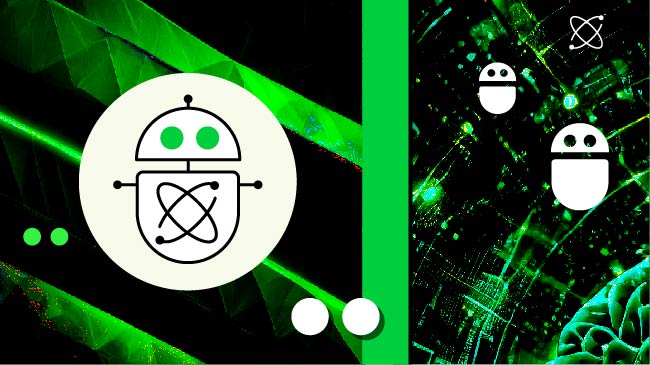IBM watsonx AI Solutions Driving Data Value
IBM executives highlight IBM Data Gate for watsonx, IBM watsonx Code Assistant for Z and watsonx Code Assistant for Enterprise Java Applications—and how they’re driving revenue and productivity

Your data is the lifeblood of your business operations. It’s also a great place for mainframe enterprises to get started with AI.
“The most significant driver of AI adoption we see is organizations trying to derive the most value out of their data as they look to improve revenue, reduce costs, enhance customer experience and ultimately create a competitive advantage,” says IBM’s Jonathan Sloan, portfolio product marketing manager, data and AI on IBM Z mainframe. “Many are already on a path to driving greater value from their data through analytics and AI.”
During the company’s annual THINK conference, IBM made numerous AI-centric announcements. Among them was the unveiling of IBM Data Gate for watsonx [Data Gate], which provides the means to synchronize transactional mainframe data for AI and analytics.
IBM Data Gate for watsonx
As Sloan explains, Data Gate makes it simpler, faster and less costly to bring data from Db2 for z/OS, IMS for z/OS and native VSAM data sets to watsonx.data for analysis and AI model building.
“Almost every decision an IT organization makes is about managing resources, and this is especially true in a centralized computing environment like the mainframe. Freeing up resources means an organization can do more with their existing investments, enhancing the ROI of their existing infrastructure,” he adds.
IBM watsonx Code Assistant for Z
Another new AI offering is watsonx Code Assistant for Z. Announced earlier this year, Code Assistant for Z is designed to increase operational efficiency and developer productivity, as Andy Bradfield, vice president, IBM Z Hybrid Cloud, explains.
“Code Assistant for Z helps organizations create a blueprint and overall understanding of the application, including program to program relationships and dependencies. Armed with this insight, the application developer can properly scope a project and have a better understanding of the impacts of the changes they are planning to make to help to ensure a successful implementation,” he says. “Code Assistant for Z seamlessly fits into a larger DevOps CI/CD pipeline, which can include automated testing and continuous delivery capabilities providing increased business agility.”
The initial version of Code Assistant for Z features a unified, common experience for its generative AI and automation capabilities within Visual Studio (VS) code. A new add-on capability known as code explanation was announced at the THINK conference. Code explanation allows developers to create natural language expressions of COBOL code through generative AI.
Bradfield notes that these capabilities make Code Assistant for Z well-suited for conducting automation and modernization initiatives.
While enterprises are increasingly exploring the possibilities with AI, interest isn’t always producing results. According to IBM’s most recent Global AI Adoption Index, while 42% of enterprises surveyed have implemented AI in their business, another 40% of companies that are exploring AI have yet to deploy their models. Code Assistant for Z is part of a growing family of AI assistants that are designed to help business take the next step.
watsonx Code Assistant for Enterprise Java Applications
watsonx Code Assistant for Enterprise Java Applications, which is planned for fall availability, is designed to simplify and accelerate the Java application lifecycle through generative AI and automation. watsonx Assistant for Z (not to be confused with Code Assistant for Z) is a generative AI assistant that’s designed to simplify and optimize the execution of common tasks performed by mainframe programmers, developers, and system operators. Existing trusted automation created with Ansible, JCL and REXX can be imported into the assistant, which uses a Z domain-specific retrieval-augmented generation (RAG) to provide curated content to users. From this single location, questions can be answered quickly and automation can be invoked directly.
Accelerating AI Adoption
“Productivity improvement is another key factor driving AI adoption,” Bradfield says. “GenAI has the real potential to significantly increase developer productivity to drive faster outcomes. That has never been more important given that developer talent is in short supply across the industry. Being able to do more with less is imperative, and GenAI is helping make that possible for application modernization.”